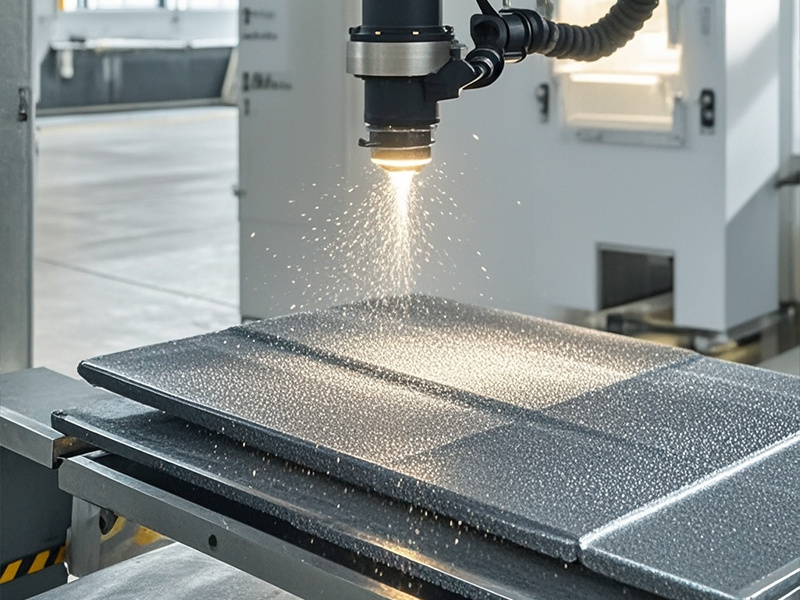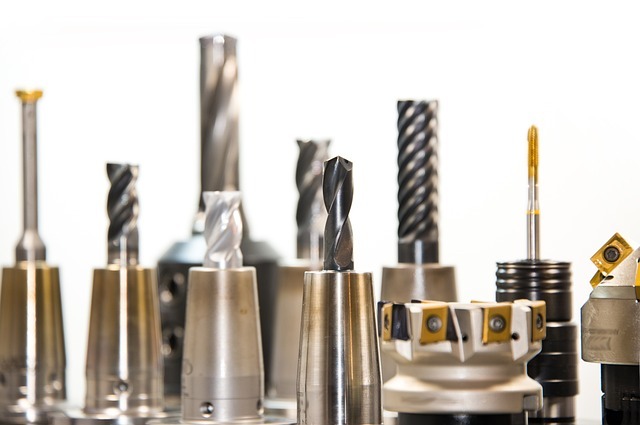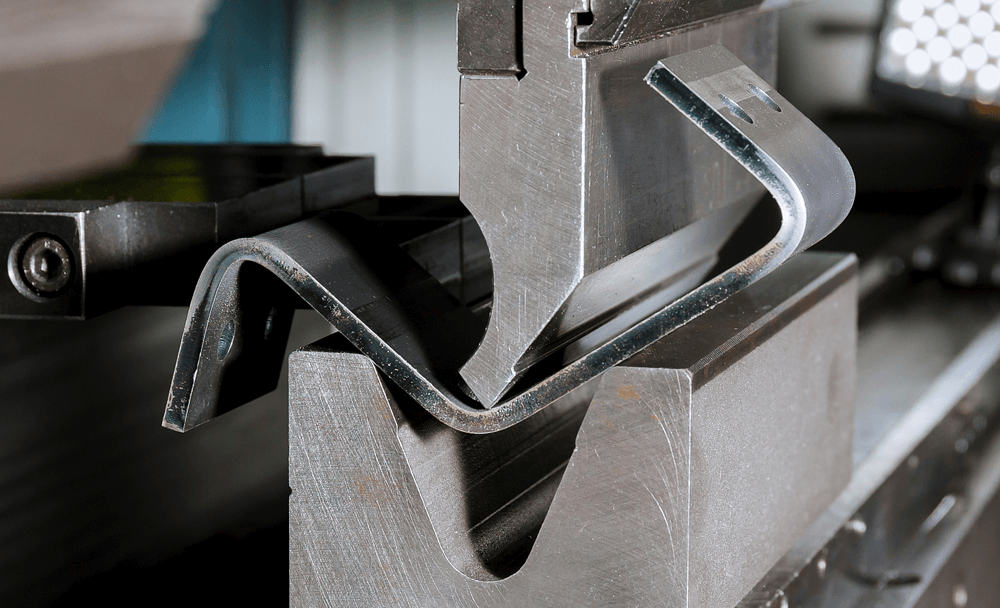Sheet metal surface sandblasting technology
Release time:
2024-10-16
In the modern industrial field, sheet metal processing is a crucial process, and sheet metal surface sandblasting technology is one of the key means to improve the quality and appearance of sheet metal products. This technology, with its unique advantages, plays an important role in many industries. This article will take you to understand the secrets of sheet metal surface sandblasting technology.
Definition and principle of sheet metal surface sandblasting technology
Sheet metal surface sandblasting is the use of high-speed jet sand flow impact sheet metal surface, to remove surface oxidation, rust, oil and other impurities, while the surface to obtain a certain roughness, thereby improving the adhesion of the subsequent coating.
Its principle mainly includes the following aspects:
1. Impact effect
The sand particles sprayed at high speed have strong kinetic energy, and when they hit the sheet metal surface, they will produce a huge impact force. This impact force can effectively remove the surface impurities and rust layer, so that the sheet metal surface becomes clean.
2. Cutting action
In the process of impacting the sheet metal surface, the sharp edges of the sand will cut the surface. This cutting action can remove the microscopic bumps and uneven parts of the surface, making the surface more smooth and flat.
3. Grinding action
Friction between the sand and the sheet metal surface causes grinding. This grinding action can further refine the roughness of the surface, make the surface more uniform, and provide a good adhesion basis for the subsequent coating.

Equipment and materials used in sand blasting technology
Sand blasting equipment
1. Sandblasting gun: It is the core component of sandblasting treatment, which accelerates the sand through compressed air and jets it to the sheet metal surface. There are many kinds of sandblasting guns, handheld, automatic, etc., which can be selected according to different processing needs.
2. Compressed air system: provides power for the sand gun to ensure that the sand can be sprayed to the sheet metal surface at high speed. Compressed air systems usually include air compressors, storage tanks, filters and other equipment.
3. Sand storage and transportation system: used to store and transport sand to ensure the continuous sandblasting process. The system usually includes sand tanks, sand valves, conveying pipes and other equipment.
Sandblast material
1. Sand: is the main material of sandblasting treatment, commonly used sand quartz sand, emery, glass beads and so on. Different sand particles have different hardness, particle size and shape, and the treatment effect of sheet metal surface is also different. When selecting sand particles, you need to make a reasonable choice based on the material, thickness and processing requirements of the sheet metal.
2. Abrasives: In addition to sand particles, other abrasives can also be used for sandblasting, such as steel pellets, steel wire cut pellets, etc. These abrasives have higher hardness and strength and can be used to handle harder sheet metal materials.
Process parameters of sand blasting technology
1. Sand grain size
Sand particle size is one of the important parameters that affect the effect of sand blasting. Generally speaking, the larger particle size of the sand has a strong impact and cutting ability, suitable for removing thicker oxide and rust layer; Sand with smaller particle size has better grinding effect and is suitable for obtaining finer surface roughness.
2. Injection pressure
The injection pressure determines the injection speed and impact force of sand particles. Higher injection pressure can improve the efficiency of sandblasting, but it may also cause excessive damage to the sheet metal surface. Therefore, when selecting the injection pressure, it is necessary to make reasonable adjustments according to the material, thickness and processing requirements of the sheet metal.
3. Injection Angle
The injection Angle refers to the Angle between the sandblasting gun and the sheet metal surface. Different injection angles will produce different treatment effects. In general, vertical injection can obtain the maximum impact and cutting force, suitable for removing stubborn dirt and oxide layers; The inclined injection can obtain a better grinding effect and is suitable for obtaining a finer surface roughness.
4. Spray distance
Spray distance refers to the distance between the sand gun and the sheet metal surface. Too close spraying distance will lead to accumulation of sand particles and excessive surface damage; If the spraying distance is too far, the efficiency of the sand blasting treatment will be reduced. Therefore, when selecting the spray distance, it is necessary to make reasonable adjustments according to the sand particle size, spray pressure and treatment requirements.
5. Sand blasting time
Sandblasting time refers to the duration of sand ejection to the sheet metal surface. Too long sandblasting time will lead to excessive roughness of the surface and affect the quality of the subsequent coating. If the blasting time is too short, the expected treatment effect cannot be achieved. Therefore, when determining the sandblasting time, it is necessary to make reasonable adjustments according to the material, thickness and processing requirements of the sheet metal.
Advantages of sandblasting technology
1. Improve surface quality
Sandblasting can remove impurities, oxide, rust, etc., from the surface of the sheet metal, making the surface clean and smooth. At the same time, sandblasting can also make the surface obtain a certain roughness, improve the adhesion of the subsequent coating, so as to improve the surface quality of sheet metal products.
2. Enhance corrosion resistance
Sand blasting can remove the rust layer on the sheet metal surface and reduce the occurrence of corrosion. In addition, sandblasting can also form a dense oxide film on the surface, further enhancing the corrosion resistance of the sheet metal.
3. Improve fatigue strength
Sand blasting can form a certain residual compressive stress on the surface of the sheet metal, thereby improving the fatigue strength of the sheet metal. The residual compressive stress can offset part of the tensile stress and reduce the occurrence of fatigue cracks.
4. Improve appearance
Sandblasting can make the sheet metal surface get different texture and gloss, thereby improving the appearance of sheet metal products. The surface after sandblasting can show matte, matte, metallic luster and other effects to meet different aesthetic needs.
Key Words






